

16 August 2019
Mr Timothy Nothdurft
Sent via email:
xxxxxxxxxxxxxxxxxxxxxxxxx@xxxxxxxxxxx.xxx.xx
Our Ref: 1819/116.15
Dear Mr Nothdurft
FOI Application – nbn MTM Standard
I am writing in relation to your request made under the
Freedom of Information Act 1982 (
the FOI Act or
the Act) in which you sought the following document – NBN-NTO-EDS-359 Network Design Rules MTM
Distribution Fibre Network.
My FOI decision is found at
Attachment A.
An FOI decision may be reviewed, subject to sections 53A and 54 of the FOI Act. Please refer to the Office of
the Australian Information Commissioner’s website at the follo
wing link, which provides details about review
processes under the Act.
If you have any questions or need to discuss your FOI application, please contact the writer via email on
xxxxxxxxxxx@xxxxx.xxx.xx. Yours sincerely
David Mesman
General Counsel
FOI Privacy & Knowledge Management

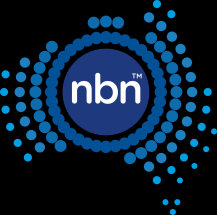 ATTACHMENT A – FREEDOM OF INFORMATION ACCESS DECISION
STATEMENT OF REASONS (FOI1819/116)
ATTACHMENT A – FREEDOM OF INFORMATION ACCESS DECISION
STATEMENT OF REASONS (FOI1819/116)
Background Information
1. In making this decision, I took into account relevant parts of the
Freedom of Information Act 1982 (
FOI
Act or
Act) and related legislation, the Office of the Australian Information Commissioner (
OAIC) FOI
Guidelines, relevant case law and other applicable sources.
2.
nbn is treated differently from other agencies and Commonwealth entities that are subject to the FOI
Act. P
er section 7(3A) and
Part II of Schedule 2 of the Act, documents relating to
nbn’s commercial
activities are carved-out from the application of the Act.
3.
nbn has summarised the OAIC’s and the Administrative Appeals Tribunal’s decisions concerning
nbn’s
commercial activities carve-out (
CAC) in a General Background Information Document (
GBI Document)
found at the follo
wing link.
4. In practical terms, the CAC ensures that
nbn is not exposed to disadvantage in the marketplace and
similar commercial environments. The CAC also enables
nbn to function as any other commercial player
in Australia’s highly competitive telecommunications industry. If
nbn were required to release
commercially-related information under the FOI regime, this would undermine
nbn’s ability to negotiate
competitive contracts, develop products and services and grow market share, among other adverse
effects. Disclosure of commercially-related information would also undermine
nbn’s capacity to generate
revenues, while driving up rollout costs. Ultimately, Australian taxpayers would have to bear those cost
increases and other potentially adverse consequences.
Terms of Request & Chronology 5. On 18 June 2019,
nbn’s FOI Team received an email from Mr Timothy Nothdurft (
the Applicant) via its
xxxxxxxxxx@xxxxx.xxx.xx account, seeking the following
nbn Design Standard – NBN-NTO-EDS-359
Network Design Rules MTM Distribution Fibre Network
(
the Standard).
6. On 1 July 2019,
nbn’s FOI Team acknowledged the Applicant’s request and provided him with an
advance deposit request for $38.75. This was based upon a processing fee estimate of $155,
reflecting 12 hours of decision-making time and one hour for search and retrieval.
7. Also on 1 July 2019, the Applicant emailed
nbn and questioned the processing fee estimate. The
Applicant claimed that the decision-making time was “disproportionate”, among other matters.
8. On 2 July 2019,
nbn’s FOI Team reverted to the Applicant and invited him to make fee reduction
submissions, as well as referring him to paragraphs 4.75-4.89 of the
FOI Guidelines.
9. On 2 July 2019, the Applicant provided
nbn’s FOI Team with a series of contentions regarding the
public interest in support of the release of the Standard.

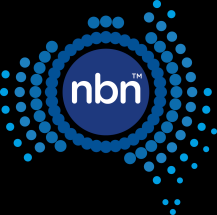
10. On 23 July 2019, the Applicant emailed
nbn’s FOI Team and, among other matters, he suggested
that
nbn’s FOI Team had not responded to his FOI application within the required time frame.
Also on 23 July 2019, I reverted to the Applicant, indicating that
nbn’s FOI Team was – at the time,
considering his fee reduction request and would respond within the required period, if not sooner.
Also on 23 July 2019, the Applicant emailed
nbn’s FOI Team and indicated that he had not agreed to
an extension and reiterated claims that
nbn had not responded to his FOI application within the
required legislative time frames. The Applicant also indicated that
nbn’s FOI Team had not acted
professionally, among other claims.
Also on 23 July 2019, I reverted to the Applicant and referred him to paragraphs 4.13 and 4.14 of the
FOI Guidelines, which make it clear that an FOI Charges Decision must be completed within 30 days
(or earlier if practicable) after receiving an applicant’s reasons for contesting the charge. As such,
the deadline for completing the Charges Decision was 31 July 2019.
11. On 26 July 2019, I completed an FOI Charges Decision (
nbn reference FOI1819/116.08A) and made
findings that the original processing fee estimate was accurate, but I determined to reduce the
search and retrieval time. In addition, I found that there was not sufficient public interest in the
Standard to warrant a reduction in FOI processing charges. On that basis, I reissued the Applicant
with an advance deposit request in the sum of $35.94, based on total processing fees of $143.75.
12. On 31 July 2019,
nbn’s FOI Team emailed the Applicant, confirming receipt of the advance deposit
payment, received by
nbn on 29 July 2019.
13. On 16 August 2019, I completed this FOI access decision and emailed it to the Applicant.
Access Decision – Summary
14. The Standard relates to
nbn’s commercial activities and is not subject to the FOI Act.
15. While it is unnecessary to consider alternative exemption grounds, there are other exemptions under
the FOI Act potentially available to
nbn in relation to the Standard. These include section 47
(commercially valuable information) and section 47E (operations of agencies), among other grounds.
Access Decision – Findings of Fact and Reasons
16. Following receipt of the Applicant’s request,
nbn staff undertook searches within the company’s
digital and other archives and located the Standard.
17. In making my FOI decision, I made the following finds of fact:
a. The Standard is not a public document. This is in contrast to the more gener
al Network Design
Rules, which
nbn publishes and updates via its externally facing website.
b. The Standard is labelled “sensitive” with directions “not to be distributed without
nbn’s consent.”

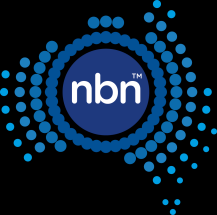
c.
nbn distributes the Standard to
nbn’s delivery partners and their agents on a confidential basis so
as to assist them in their efforts to construct and build the
nbn™ broadband access network.
d. The Standard’s purpose is to describe
nbn network design rules and assist
nbn’s delivery partners
in the construction and build of the network. Delivery partners are required to read and use the
Standard in conjunction with a series of other similar design standards. These documents are
similarly labelled as sensitive and are shared on a confidential basis with
nbn’s delivery partners.
e. The Standard is
nbn’s intellectual property, upon which
nbn expended significant resources, both
internally and externally, in developing.
f. The Standard forms part of
nbn’s asset base.
g. Beyond expenses incurred in its development and creation, the Standard has value to
nbn as a
commercial document. It also has value as an ongoing reference point for the current and future
rollout of the
nbn™ broadband access network.
18. As outlined in th
e GBI Document, there are various factors which may weigh in favour of an activity
being considered as “relating to
nbn’s commercial activities”. In summary, activities are considered
“commercial” for the purposes of the CAC if they are “related to, engaged in or used for commerce”.
However, determining what constitutes “commercial activities” must be considered “in the whole of
the circumstances.”
19. One key criterion for determining if a document relates to
nbn’s commercial activities is whether it
concerns profit-making. It is clear that
nbn is a commercial entity, focussed on generating sales and
profit. This fact is supported by the two published OAIC decisions relating to
nbn’s CAC.
nbn’s
commercial nature is also made clear by the fact that
nbn generated $2.825 billion in revenue during
FY19 and those totals are projected to grow to roughly $4b per annum by 2020.
20. Despite
nbn’s general commercial purpose and mission,
nbn’s FOI Officer is required to determine
whether specific documents, such as the Standard, relate to or are used in commerce in the whole
of the circumstances.
21. In th
e Battersby Decision, the OAIC indicated that
nbn’s commercial activities are broad in nature
and are not limited to activities carried out in competition either with government or private
entities. Per the OAIC’s reasoning, the activities do not necessarily need to be market-based or be
limited to
nbn’s involvement with the private sector in order to be commercial activities. However, it
is clear that the Standard relates to
nbn’s involvement with the private sector – it was drafted as a
guidance document for
nbn’s business and delivery partners, all of which are engaged by
nbn pursuant to commercial contracts.
22. There are a number of other factors that suggest that the Standard “relates” to
nbn’s current and
future commercial activities, including:
a.
nbn provides the Standard, and documents like it, to its delivery partners on a confidential
basis for a practical, business-related purpose. The Standard acts as a “guide book” for

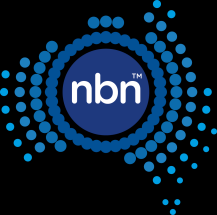
construction and other delivery partners to follow in the field for designing and constructing
a “standard” Multi-Technology Mix (
MTM) build.
b. The Standard and similar
nbn design documents have an inherent commercial value for
nbn
because they enable
nbn’s delivery partners to increase standardisation in their practices and
processes. Among other benefits, the Standard could assist in minimising interactions with
delivery partners regarding routine issues for an MTM build. It could also increase efficiencies
and the speed at which our company rolls out the
nbn™ broadband access network, thereby
lowering
nbn’s operating cost base, while expanding the number of connections and bolstering
nbn’s revenue streams. This is made clear by the fact that
nbn allocates significant resources,
person hours and direct expenditures in its efforts to develop the Standard and like documents –
and to educate delivery partners about the processes contained in them.
c. Disclosure of the Standard to the Applicant also risks making the Standard part of the public
domain. If a document enters the public domain, it would undermine its commercial value. This
would clearly diminish
nbn’s underlying investment in developing the Standard, as well as the
competitive value of the information in the document.
d. Disclosure of the Standard could also enable competitors in the telecommunications industry to
identify potential business or commercial opportunities. This could include developing
businesses cases for choosing to locate competitors’ infrastructure or provisioning additional
network capacity (or otherwise) to their commercial advantage. As other telecommunications
providers could glean where they might introduce competing technologies (e.g. 5G and similar
solutions),
nbn could be placed at a commercial disadvantage.
e. Additionally,
nbn’s competitors in the telecommunications (or infrastructure build) industry
could use the Standard to minimise the expenses associated with the drafting of designs and
other commercial data found in the document. In effect,
nbn would be providing competitors (or
others in related industries) with a valuable resource, for which they have not paid. This clearly
puts
nbn at a commercial disadvantage.
f. Disclosure of the Standard would tend to undermine
nbn’s ability to control the use of its
confidential information and intellectual property. This is an important issue, particularly in light
of any future privatisation efforts involving
nbn. In any privatisation or the sale of company
assets, intellectual property is a key asset which will figure in the calculation of any future sale
price. It follows that if the Standard and similar documents were made part of the public domain
pursuant to FOI requests,
nbn could potentially undermine the value of its intellectual property.
This could, in turn, undermine the value of
nbn’s asset base in any future sale of the company.
g. Disclosure of the Standard could potentially increase
nbn’s vulnerability to physical and other
attacks – whether from hackers, vandalism, criminal elements or terrorists. This could reasonably
be expected to cause damage to the security of the Commonwealth. If the Standard were to be
released generally,
nbn may be required to increase the level of security associated with or
applied to the network, as well as providing for increased security costs in its budget and
commercial planning processes. This could conceivably lead to cost and time overruns, as well as
delaying the
nbn rollout generally, which could adversely impact
nbn’s ability to generate profits.
Ultimately, these costs would be borne by Australian taxpayers.

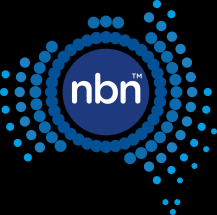
23. Based upon the above points, it is my view that the Standard relates to
nbn’s current and future
commercial activities per
sections 7(3A)(a) and (b) of the FOI Act.
Decision-making Time and Fees
24.
nbn staff spent approximately two hours searching and retrieving documents (equivalent to $30), but
this was reduced to 0.25 hours ($3.75) following
nbn’s Charges Decision. In relation to drafting this
decision, I spent more than the estimated 12 hours in reviewing documents and drafting this FOI decision
(equivalent to $140, noting that the first five hours of processing time are free). As the Applicant paid an
advance deposit of $35.94, the outstanding fees are $107.81.
25. In
its Submission to the OAIC Charges Review, nbn outlined its support of fees and charges and their
importance to the FOI scheme. Normally,
nbn would charge applicants for processing fees incurred in
relation to FOI requests. However, I also considered
nbn’s commitment to the objects of the FOI Act and,
in particular, section 3(4) of the FOI Act, which seeks to facilitate and promote public access to
information, promptly and at the lowest reasonable cost. I also took into account the fact that
nbn made
a determination not to release the Standard.
26. On balance, I have determined to waive the remaining processing fees in relation to this FOI application.
This is permitted by Regulation 3 of the
Freedom of Information (Charges) Regulations 1982, which
provides decision-makers with a general discretion to impose or not impose a charge, or impose a
reduced charge for the processing of an FOI request.
27. If you are dissatisfied with this decision, you have certain rights of review. These are outlined in the
covering letter, provided with this Statement of Reasons.
****












